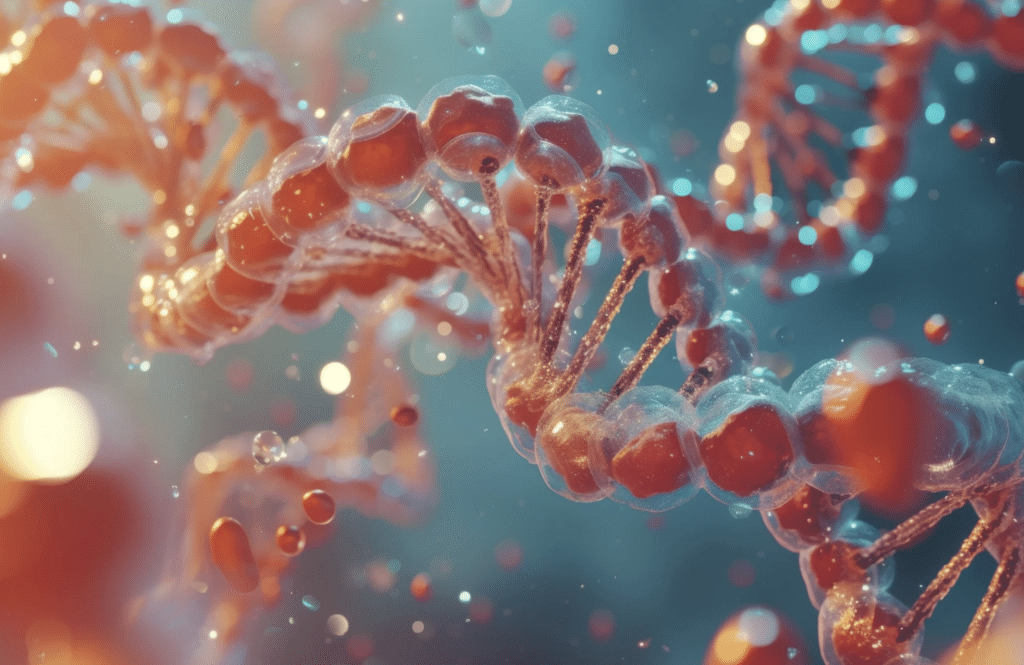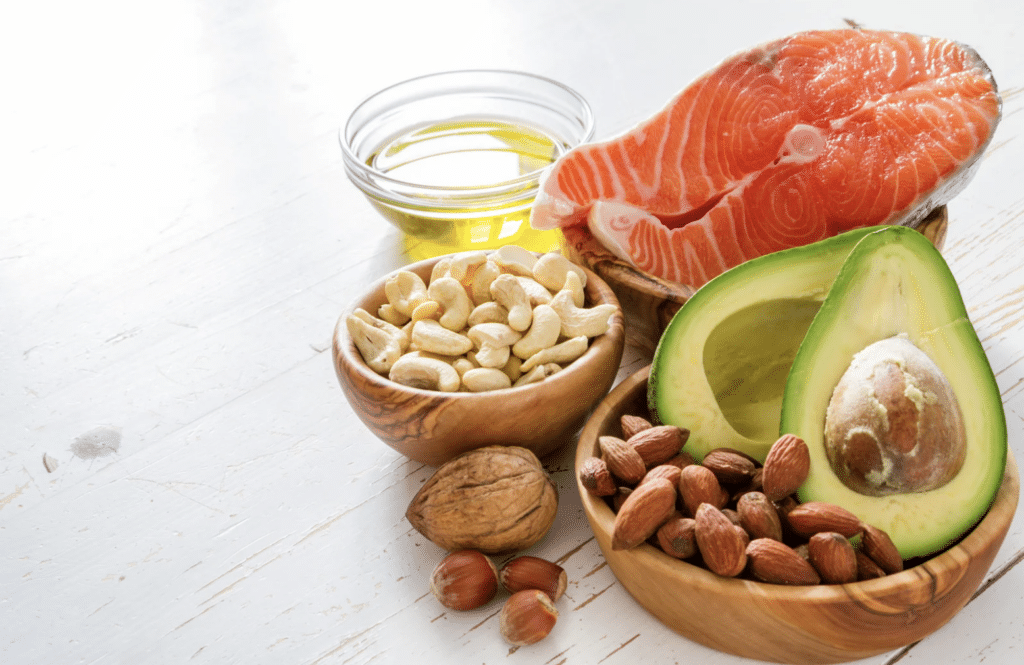
Exploring NAD Plus Benefits for Enhanced Energy, Metabolism, and Aging Gracefully
Understanding NAD+ and Its Role in Human Health
Nicotinamide adenine dinucleotide (NAD+) has emerged as a crucial molecule in the conversation about aging, energy, and overall wellness. This powerful coenzyme exists in every cell of your body and plays a fundamental role in hundreds of metabolic processes.
As we explore NAD+ benefits for enhanced energy, metabolism, and aging gracefully, it’s important to understand why this molecule has captured the attention of researchers and health enthusiasts alike.
NAD+ works as a critical component in cellular energy production, DNA repair, and cellular communication. It serves as an electron carrier in metabolic reactions and acts as a substrate for enzymes that regulate important biological activities.
The significance of NAD+ extends beyond basic cellular function—it’s now recognized as a key player in how we age and how our bodies maintain optimal performance throughout life.
What is NAD+ and Why It Matters

NAD+ (nicotinamide adenine dinucleotide) is a coenzyme found in all living cells that plays a crucial role in energy metabolism and maintaining proper cell function. It exists in two forms: NAD+ (oxidized) and NADH (reduced), which continuously convert back and forth as part of cellular energy production.
This molecule serves as an electron transporter in metabolic reactions and acts as a substrate for enzymes like sirtuins and PARPs that regulate important biological processes.
Why does NAD+ matter so much? It’s involved in over 500 enzymatic reactions and plays a vital role in converting food into energy, maintaining DNA integrity, regulating circadian rhythms, and supporting immune function.
Perhaps most importantly, NAD+ levels naturally decline with age—dropping by up to 50% from young adulthood to middle age. This decline correlates with many hallmarks of aging and age-related diseases, making NAD+ restoration an exciting area of research for longevity and wellness.
The Science Behind NAD+ Decline with Age
Research has consistently shown that NAD+ levels decrease significantly as we age. By age 50, most people have about half the NAD+ they had in their 20s.
This decline isn’t just a coincidence—it’s linked to many age-related changes and health challenges. Several factors contribute to this reduction:
- First, the enzymes that synthesize NAD+ become less efficient with age. Additionally, there’s increased activity of NAD+-consuming enzymes like CD38, which becomes more active during aging and inflammatory conditions.
- Chronic inflammation, oxidative stress, and DNA damage, all more common in aging bodies, also deplete NAD+ reserves as repair mechanisms require this molecule to function.
- The NAD+ precursors we obtain from our diet may also become less efficiently processed as we age. Studies published in Cell Metabolism (2023) have demonstrated that this decline correlates with mitochondrial dysfunction, reduced cellular energy production, and impaired ability to repair DNA damage—all hallmarks of the aging process.
Key Benefits of Optimal NAD+ Levels
Maintaining healthy NAD+ levels offers numerous benefits that extend beyond simply feeling energetic. From cellular repair to cognitive function, this molecule’s influence reaches virtually every system in your body. Let’s examine the key advantages of optimal NAD+ levels and how they contribute to overall health and longevity.
Enhanced Energy Production and Mitochondrial Function
NAD+ plays a central role in cellular energy production through its involvement in mitochondrial function. As the primary electron carrier in the electron transport chain, NAD+ helps convert the food we eat into ATP—the energy currency of our cells.
When NAD+ levels are optimal, mitochondria can efficiently produce energy, resulting in improved physical performance, reduced fatigue, and enhanced stamina.
Studies from the Journal of Clinical Investigation (2024) have shown that boosting NAD+ levels can increase mitochondrial biogenesis, the creation of new mitochondria, while improving the efficiency of existing mitochondria. This is particularly beneficial for high-energy-demanding tissues like muscles, heart, and brain.
Athletes and active individuals often report significant improvements in endurance and recovery when supplementing with NAD+ precursors.
NAD+ is not just another supplement—it’s fundamental to how our cells produce energy. Optimizing NAD+ levels can transform cellular energy production, potentially adding life to your years and years to your life.
For those experiencing chronic fatigue or age-related energy decline, addressing NAD+ levels may provide a solution that works at the cellular level rather than just masking symptoms with stimulants. Formula Wellness offers specialized protocols designed to boost NAD+ levels and enhance mitochondrial function.
Improved Metabolic Health and Weight Management

NAD+ significantly influences metabolic health through its effects on insulin sensitivity, glucose metabolism, and fat utilization. Research published in Science (2022) demonstrates that higher NAD+ levels correlate with improved insulin sensitivity and better glucose control—key factors in metabolic health and weight management.
By activating sirtuins, particularly SIRT1, NAD+ helps regulate metabolic pathways that control fat storage and utilization. This activation can enhance the body’s ability to burn fat for energy rather than storing it.
Additionally, NAD+ supports the function of brown adipose tissue, which burns calories to generate heat in a process called thermogenesis.
Many individuals struggling with weight management find that addressing NAD+ levels helps break through plateaus by optimizing metabolic function at the cellular level. This approach works synergistically with proper nutrition and exercise, potentially making weight management efforts more effective and sustainable.
For those concerned about metabolic health, combining NAD+ therapy with other wellness approaches like advanced aesthetic treatments can provide comprehensive results that address both internal and external aspects of aging and wellness.
Cellular Repair and DNA Protection
One of NAD+’s most remarkable benefits is its role in DNA repair and cellular maintenance. As we age, our cells accumulate damage from various sources—environmental toxins, UV radiation, oxidative stress, and metabolic byproducts.
NAD+ serves as a critical substrate for enzymes called PARPs (poly ADP-ribose polymerases) that detect and repair DNA damage.
When DNA damage occurs, PARPs consume large amounts of NAD+ to facilitate repairs. With adequate NAD+ levels, these repair mechanisms function optimally, helping prevent mutations that could lead to cancer and other age-related diseases.
Additionally, NAD+ activates sirtuins like SIRT1 and SIRT6, which help maintain genomic stability and promote longevity.
Research from Harvard Medical School in 2023 demonstrated that restoring NAD+ levels in older animals improved DNA repair capacity to levels similar to those seen in younger animals. This suggests that NAD+ supplementation might help counteract age-related genomic instability and support cellular health at the most fundamental level.
Cognitive Function and Neuroprotection
The brain is particularly vulnerable to age-related decline and has high energy demands, making NAD+ especially important for cognitive health. NAD+ supports brain function through multiple mechanisms, including energy production, DNA repair, and regulation of neuroinflammation.
Studies published in the journal Neurotherapeutics (2024) have shown that NAD+ depletion occurs in various neurodegenerative conditions, including Alzheimer’s and Parkinson’s diseases. Conversely, boosting NAD+ levels appears to offer neuroprotective effects, potentially slowing cognitive decline and supporting brain health.
NAD+ also helps maintain the integrity of brain cells by supporting mitochondrial function and reducing oxidative stress.
Many individuals report improved mental clarity, better memory, and enhanced focus when supplementing with NAD+ precursors or receiving NAD+ therapy.
NAD+ Boosting Strategies for Everyday Life

Incorporating NAD+ boosting strategies into your daily routine doesn’t have to be complicated. From dietary choices to lifestyle modifications, there are numerous accessible ways to support your body’s NAD+ production naturally. Let’s explore practical approaches to enhance your NAD+ levels.
Dietary Sources and Natural Ways to Increase NAD+
Your diet plays a significant role in maintaining healthy NAD+ levels. Several foods contain NAD+ precursors that your body can convert into this essential molecule:
- Foods rich in niacin (vitamin B3) are excellent sources of NAD+ precursors. These include turkey, chicken, fish, mushrooms, brown rice, and peanuts.
- Tryptophan-rich foods like eggs, milk, and cheese also support NAD+ production, as tryptophan can be converted to NAD+ through a metabolic pathway.
- Fermented foods like kimchi, sauerkraut, and kombucha may support NAD+ production by promoting gut health and providing beneficial compounds.
- Resveratrol-containing foods such as grapes, blueberries, and red wine can activate sirtuins, which work in concert with NAD+.
Beyond diet, certain lifestyle practices can naturally boost NAD+ levels:
- Regular exercise increases NAD+ by activating AMPK, an enzyme that promotes NAD+ production.
- Intermittent fasting and caloric restriction have been shown to increase NAD+ levels by activating similar pathways.
- Getting adequate sunlight exposure (while protecting your skin) may also support NAD+ production through circadian rhythm regulation.
Supplement Options: NMN, NR, and Other Precursors Compared
When dietary and lifestyle approaches aren’t sufficient, supplements offer a more direct way to boost NAD+ levels. Several NAD+ precursors are available as supplements, each with unique characteristics:
- Nicotinamide Riboside (NR) is one of the most studied NAD+ precursors. It’s efficiently converted to NAD+ in the body and has demonstrated good bioavailability. Research published in Nature Communications (2023) shows NR can effectively raise NAD+ levels in humans with minimal side effects.
- Nicotinamide Mononucleotide (NMN) is another popular precursor that’s one step closer to NAD+ in the metabolic pathway. Some research suggests it may have superior effects on certain tissues, particularly the liver and skeletal muscle. However, its larger molecular size may affect absorption.
- Niacin (nicotinic acid) is an effective NAD+ precursor but often causes uncomfortable flushing at doses needed to significantly boost NAD+.
- Nicotinamide (NAM) is flush-free but may inhibit sirtuins at high doses, potentially limiting some benefits.
- Newer compounds like dihydronicotinamide riboside (DHNR) and reduced nicotinamide mononucleotide (NMNH) are emerging as potentially more stable or effective alternatives, though research is still preliminary.
When choosing a supplement, consider factors like quality, dosage, and supporting ingredients. Some formulations include complementary compounds like resveratrol, quercetin, or trimethylglycine that may enhance NAD+ utilization or provide synergistic benefits for anti-aging effects
Optimal Dosing Guidelines by Age and Health Status
Determining the optimal NAD+ precursor dosage depends on various factors including age, health status, and specific goals. While research is still evolving, current evidence suggests some general guidelines:
- For healthy adults under 40, lower maintenance doses of NAD+ precursors may be sufficient—typically 250-500mg daily of NR or NMN.
- Those over 40 may benefit from higher doses, often 500-1000mg daily, as natural NAD+ levels decline more significantly with age.
- Individuals with specific health concerns like metabolic disorders, cardiovascular issues, or neurological conditions might require higher therapeutic doses, sometimes 1000-2000mg daily, ideally under healthcare supervision.
- Athletes and those under high physical stress may benefit from increased dosages during intense training periods to support recovery and energy production.
- Those recovering from illness or injury might temporarily increase dosages to support healing processes.
It’s important to note that more isn’t always better. Extremely high doses haven’t shown proportionally greater benefits and may potentially inhibit certain pathways. Starting with lower doses and gradually increasing while monitoring effects is often the most prudent approach.
NAD+ Therapy: Advanced Options
For those seeking more intensive NAD+ interventions beyond oral supplements, advanced therapeutic options offer powerful alternatives. These clinical approaches deliver NAD+ or its precursors directly to the bloodstream or tissues, potentially providing more immediate and pronounced effects.
IV NAD+ Therapy: Benefits, Risks, and What to Expect

Intravenous (IV) NAD+ therapy represents one of the most direct methods of increasing NAD+ levels. During this procedure, NAD+ is administered directly into the bloodstream, bypassing digestive processes that might limit absorption of oral supplements.
The benefits of IV NAD+ therapy can be significant. Many patients report immediate improvements in energy, mental clarity, and mood. The therapy may provide more rapid support for conditions like chronic fatigue, neurodegenerative concerns, and addiction recovery.
Because IV administration achieves higher blood concentrations than oral supplements, it may be more effective for addressing severe NAD+ depletion. However, IV therapy comes with considerations.
Sessions typically last 2-4 hours as NAD+ must be infused slowly to avoid uncomfortable side effects like chest pressure, nausea, or headaches.
The treatment requires professional administration in a clinical setting and is more expensive than oral supplementation. Most protocols involve a series of treatments rather than a single session for optimal results.
What should you expect during treatment?
After an initial consultation and health assessment at a facility like Formula Wellness, you’ll be comfortably seated while a healthcare provider inserts an IV line.
The NAD+ solution is then slowly infused while your vital signs are monitored. Many patients bring books, work remotely, or simply rest during the infusion. Some experience immediate effects, while others notice benefits developing over subsequent days.
Topical NAD+ Products: Do They Work?
Topical NAD+ products have entered the market as a convenient alternative to oral supplements and IV therapy. These creams, serums, and patches claim to deliver NAD+ or its precursors directly through the skin to underlying tissues. But do they actually work? The scientific evidence for topical NAD+ products is currently limited compared to oral and IV options.
The primary challenge is the size of the NAD+ molecule and its precursors, which may be too large to effectively penetrate the skin barrier in significant amounts.
However, advanced delivery systems like liposomes, nanoparticles, and specialized carriers are being developed to improve transdermal absorption. Some studies suggest that topical application may provide localized benefits to skin cells, potentially improving skin appearance, reducing wrinkles, and enhancing repair of UV damage. This makes sense given NAD+’s role in cellular energy and repair mechanisms within skin cells.
For those interested in topical applications, products containing smaller precursors like nicotinamide (a form of vitamin B3) have more research supporting their skin benefits. Nicotinamide has been shown to improve skin barrier function, reduce hyperpigmentation, and protect against UV damage.
Combining NAD+ with Other Anti-Aging Interventions
The power of NAD+ can be amplified when strategically combined with other anti-aging approaches. Creating synergistic protocols that address multiple aspects of aging simultaneously often yields results greater than any single intervention alone. Let’s explore how to maximize NAD+ benefits through thoughtful combinations.
Synergistic Effects with Exercise and Fasting

Exercise and fasting create a powerful synergy with NAD+ enhancement strategies. Both activities naturally increase NAD+ levels through similar cellular pathways, making them excellent companions to supplementation or therapy.
Exercise stimulates NAD+ production by activating AMPK (AMP-activated protein kinase), a cellular energy sensor that responds to increased energy demands. High-intensity interval training (HIIT) appears particularly effective at boosting NAD+ levels, with studies showing increases of up to 30% following regular HIIT protocols. Resistance training also supports NAD+ by promoting muscle mitochondrial function and reducing inflammation.
Intermittent fasting and caloric restriction work through similar mechanisms, activating AMPK and increasing NAD+ synthesis while reducing NAD+ consumption. Research published in Cell Metabolism (2024) demonstrates that combining NAD+ precursors with intermittent fasting produced greater improvements in metabolic health markers than either intervention alone.
The timing of NAD+ supplementation relative to exercise or fasting can optimize benefits. Taking NAD+ precursors before exercise may provide additional substrate for energy production during the workout, while taking them during a fasting window might enhance cellular cleanup processes like autophagy.
Complementary Supplements and Compounds
Several supplements and compounds can enhance NAD+ effectiveness when used together. These complementary agents either support NAD+ production, improve NAD+ utilization, or work through parallel pathways to promote similar benefits:
- Resveratrol, found in red wine and available as a supplement, activates SIRT1, a sirtuin enzyme that requires NAD+ as a substrate. Research suggests that combining resveratrol with NAD+ precursors produces greater sirtuin activation than either alone.
- Quercetin, a flavonoid found in many fruits and vegetables, inhibits CD38, an enzyme that consumes NAD+, potentially preserving NAD+ levels.
- Pterostilbene, a compound similar to resveratrol but with better bioavailability, also activates sirtuins and may complement NAD+ precursors.
- Apigenin, found in parsley, chamomile, and celery, inhibits CD38 activity similar to quercetin, potentially preserving NAD+ levels.
- Antioxidants like vitamin C, vitamin E, and alpha-lipoic acid may protect NAD+ from oxidative damage while supporting overall cellular health.
- Magnesium is essential for hundreds of enzymatic reactions, including those involved in NAD+ metabolism, making adequate magnesium status important for optimal NAD+ function.
Real-World Results: Case Studies and Testimonials
While scientific research provides the foundation for understanding NAD+ benefits, real-world experiences offer valuable insights into practical applications and outcomes.
Athletic Performance Improvements
Professional and recreational athletes have reported significant performance enhancements after incorporating NAD+ boosting strategies:
- A 42-year-old marathon runner described a 7% improvement in his finishing time after three months of NMN supplementation (500mg daily), noting that his recovery between training sessions was “dramatically improved.”
- A case study of competitive cyclists showed that those receiving IV NAD+ therapy before major competitions experienced reduced perceived exertion and improved power output during high-intensity segments. Their coaches noted that the athletes maintained peak performance for longer durations compared to previous seasons.
- Strength athletes have reported benefits as well. A group of powerlifters using NR supplementation (1000mg daily) for six months documented an average 12% increase in total lifting volume and reduced post-workout soreness, allowing for more frequent high-intensity training sessions.
Recovery from Chronic Conditions
NAD+ therapies have shown promising results for individuals recovering from various chronic conditions:
- A 58-year-old woman with chronic fatigue syndrome reported that after eight weeks of NAD+ IV therapy followed by daily NMN supplementation, her energy levels increased from “barely functional” to “nearly normal,” allowing her to resume part-time work and regular social activities.
- Several case reports document improvements in individuals recovering from substance dependence. A 45-year-old man with a 20-year history of alcohol dependence reported that NAD+ therapy significantly reduced withdrawal symptoms and cravings during his recovery process. Six months later, with continued oral supplementation, he maintained sobriety and noted improved cognitive function and emotional stability.
- Patients with autoimmune conditions have also reported benefits. A 39-year-old woman with rheumatoid arthritis observed reduced joint pain and inflammation after incorporating NAD+ precursors alongside her conventional treatment, potentially due to NAD+’s role in regulating inflammatory processes.
Anti-Aging Effects Observed in Users
Long-term users of NAD+ enhancement strategies often report notable anti-aging effects across multiple systems:
- A 65-year-old retired physician documented his experience with daily NMN supplementation (750mg) over three years, noting improved cognitive performance, better stress resilience, and maintenance of muscle mass despite reduced exercise intensity.
- A 72-year-old woman using a combination of NR supplementation and quarterly NAD+ IV treatments reported that her biological age testing showed a 7-year reduction after 18 months of this protocol. She specifically noted improvements in skin elasticity, sleep quality, and recovery from physical activity.
- Several users in their 50s and 60s have documented stable or improved cardiovascular markers, including blood pressure, lipid profiles, and inflammatory indicators, after incorporating NAD+ precursors into their health regimens. Many report subjective improvements in skin appearance, hair quality, and overall vitality.
Potential Side Effects and Contraindications
While NAD+ enhancement offers numerous benefits, it’s important to understand potential side effects and situations where caution is warranted. Being informed about these considerations helps ensure safe and effective use of NAD+ boosting strategies.
Common Side Effects and How to Minimize Them
- Most NAD+ precursor supplements are generally well-tolerated, but some users experience mild side effects.
- Gastrointestinal discomfort, including nausea, stomach upset, and diarrhea, is the most commonly reported issue.
- This is particularly common at higher doses or when taken on an empty stomach. Taking supplements with food and starting with lower doses can significantly reduce these symptoms.
- Flushing (temporary redness, warmth, and tingling, particularly in the face and upper body) can occur with certain precursors, especially niacin.
- Modified-release formulations or switching to non-flushing precursors like NR or NMN can address this issue.
- Headaches and fatigue are occasionally reported, particularly when beginning supplementation.
- These typically resolve as the body adjusts to increased NAD+ levels. Staying well-hydrated and temporarily reducing dosage can help manage these symptoms.
- IV NAD+ therapy can cause more pronounced side effects during administration, including chest pressure, anxiety, nausea, and headache.
- These are typically dose-dependent and can be managed by slowing the infusion rate. Working with experienced providers who can adjust protocols based on individual responses is essential for comfortable treatment.
- Sleep disturbances may occur if NAD+ precursors are taken late in the day, as increased energy production can interfere with normal sleep onset. Taking supplements in the morning or early afternoon typically resolves this issue.
Who Should Avoid NAD+ Supplementation
While NAD+ enhancement is appropriate for many individuals, certain populations should exercise caution or avoid supplementation without medical supervision.
- Pregnant or breastfeeding women should generally avoid NAD+ precursor supplementation due to limited safety data in these populations. The same applies to children and adolescents, as most research has focused on adults.
- Individuals with certain medical conditions require careful consideration before using NAD+ boosters. Those with kidney or liver disease may process these compounds differently and should consult healthcare providers before supplementing.
- People with autoimmune conditions should approach NAD+ enhancement cautiously, as NAD+ influences immune function and could potentially affect disease activity.
- Those taking medications that affect NAD+ metabolism or compete for similar metabolic pathways should seek medical guidance. This includes certain antibiotics, chemotherapy drugs, and immunosuppressants.
- Individuals with a history of methyl-related issues (like MTHFR mutations) may need specialized forms of NAD+ precursors or additional supporting nutrients.
- People with bipolar disorder or a history of mania should use caution, as some anecdotal reports suggest NAD+ boosting may potentially influence mood stability in sensitive individuals.
- Those with cancer or a history of cancer should consult oncologists before using NAD+ precursors, as NAD+’s role in cellular energy and repair is complex in the context of cancer.
About Formula Wellness
Formula Wellness is a premier integrative medicine and wellness center dedicated to helping clients achieve optimal health through advanced therapies and personalized care.
Specializing in treatments such as NAD+ therapy, hormone optimization, aesthetic procedures, and comprehensive wellness programs, Formula Wellness combines medical expertise with innovative approaches to improve both internal health and external appearance.
With locations across Texas and partnerships in other states, the practice provides high-quality, accessible care focused on enhancing energy, longevity, and overall well-being.
The team of experienced healthcare professionals creates individualized treatment plans tailored to each client’s goals, empowering them to feel and perform at their best.To learn more or schedule a consultation, call (512) 503-4355 or contact us online.